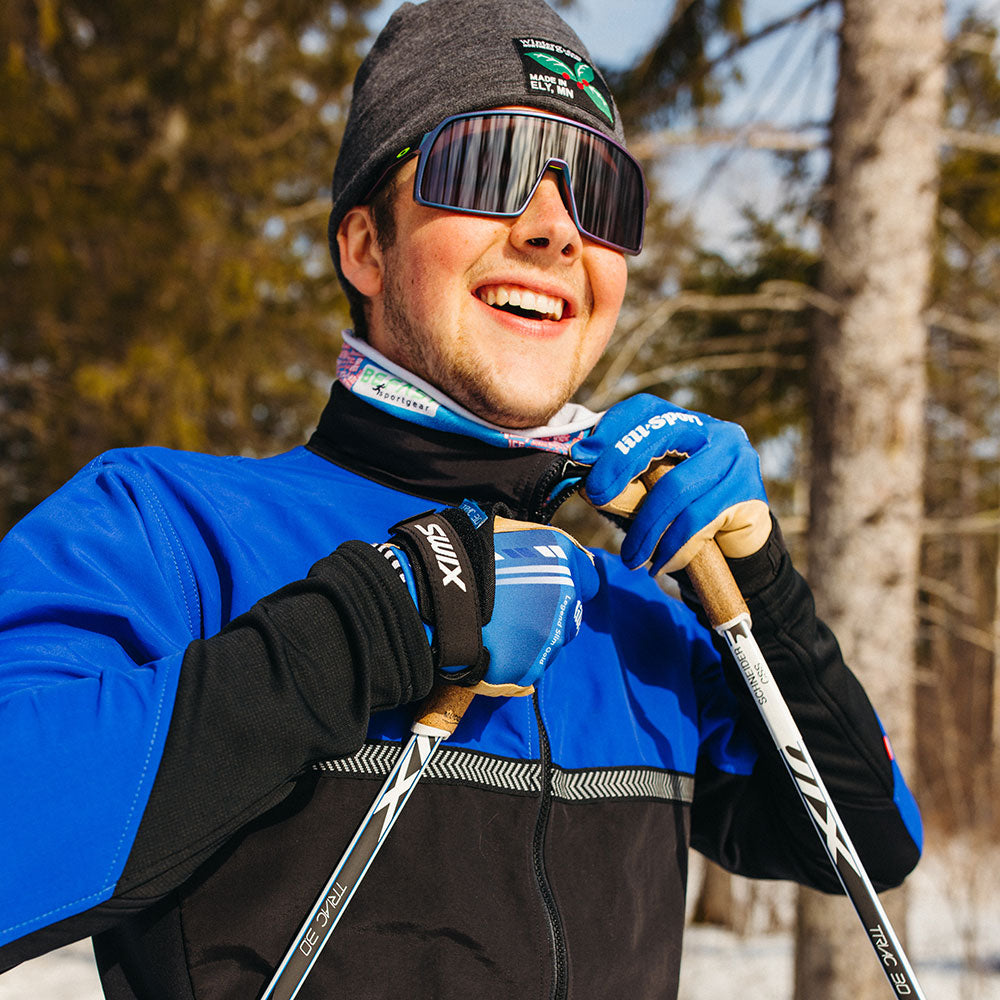If you enjoy canoe tripping but find portaging to be a difficult part of the adventure, this blog will help you learn how to more comfortably and safely portage a canoe. Portaging your canoe with good technique can transform carrying the boat from a dreaded task into a safe, quick, and perhaps even pleasant experience. In addition, good techniques can help increase safety even for those who already enjoy portaging.
To be clear, not everyone should attempt to carry a canoe. Anyone with serious back or hip pain should only try to carry the boat with supervision from a qualified instructor who is aware of these physical traits. However, with good technique it is possible for most people, even small people, to safely carry a relatively heavy boat. As a canoe camping guide, I’ve taught portaging to hundreds of people of all ages, sizes, and levels of physical fitness.
Being good at portaging can help you reach awesome places where few other people go. Learning can be difficult, but it pays off.
Alright, are you ready to learn cool tricks? Here we go:
1) Use a proper yoke and padding
If you’re going to be portaging with a borrowed or rented canoe, make sure the canoe has a sturdy yoke and good portage pads. I’ve been in the unfortunate position of portaging a canoe that had only a straight wooden thwart to rest on my shoulders, and it was quite painful. Some canoes have carved wooden yokes that are meant to contour to your shoulders. This works alright for short, infrequent portaging with a light canoe, but for longer portages you will probably be more comfortable with portage pads.

2) Tidy up your stuff before reaching the portage
You can be much more efficient during the portage if you tuck away loose odds and ends before you land. Once you spot the portage, take a moment on the water to put away your water bottle, sunscreen, snacks, tackle boxes, or whatever else might have accumulated at your feet during the paddle. After you have everything consolidated into as few bags as possible, you’re ready to paddle up to the portage and begin unloading. In addition to helping you portage faster, this is considered good etiquette at busy portages, where inefficient travelers can cause congestion and prevent other canoeists from using the trail.
3) Get your feet wet (or wear rubber boots)
When you reach the landing, bring the canoe close to the shore and then step from the canoe directly into the shallow water. This is called “wet-foot portaging,” and it’s typically way easier and safer than trying to keep your feet dry by stepping from the canoe onto land. Northern Tier High Adventure published this useful video showing efficient wet-foot portaging.
Old running shoes or sneakers make great “wet boots” because you can step in and out of the lake as you unload, they don’t fill up with mud as easily as sandals, and they don’t hold a bunch of water once you get onto the trail and start walking. During the day as you travel, you’ll wear your wet boots in the canoe and as you portage. When you reach camp in the evening, you change into dry camp shoes. The next morning you’ll have to put your wet boots back on, but I promise this isn’t nearly as unpleasant as it sounds.
Using the wet-foot technique is safer because:
- You’re much less likely to swamp the canoe while you’re unloading.
- You’re less likely to damage the canoe, since you’re not putting weight on the hull while it’s beached.
- You’ll be able to lift and carry heavy packs without also worrying about balancing yourself inside the canoe.
If it’s super cold or you have a medical reason to avoid wet feet, use tall rubber boots in order to step in and out of the lake with dry feet. This is slightly more difficult because you have to worry about getting water over the top of the boots, but it’s helpful in certain situations.

4) Unload into a tidy pile
It can be tempting to unload randomly onto an assortment of flat spots at the landing. However, having your gear spread out makes it easy to lose small, important things. My friends and I have found many forgotten items at portage landings, including wallets, sunglasses, water bottles, tackle boxes, fishing poles, rain jackets, PFDs, cameras, and even a brand-new carbon-fiber paddle. Avoid losing items by unloading everything into one spot. Having a single, contained pile is also more polite if other paddlers arrive at the landing.
5) Use proper lifting and lowering techniques
This is critical. If you use poor lifting techniques, you risk injuring yourself. If you have good technique, lifting the canoe is very safe and successful for almost everyone. This excellent video from University of Minnesota Duluth shows two good lifting methods, and correctly emphasizes that lifting should rely on technique rather than strength. Good lifting and lowering is always careful and controlled. Control is especially important when you’re setting the canoe down at the end of the portage, when you might be tempted to throw the boat off your shoulders and into the water.
It’s also helpful to note that a two-person lifting and lowering method is much safer for yourself and the canoe compared to a solo method. If you have a paddling partner, let them help you lift the boat. If you absolutely must do a one-person lift, make sure you have very stable footing and try to avoid lifting in overly windy conditions. Whatever method you use, it should always be careful and controlled.
6) Have a buddy on the portage trail, and switch when needed
Communication and teamwork are crucial for safe portaging. If you have a paddling partner, they should stick close to you during the portage in order to help you if anything goes wrong. For longer portages, this allows you to switch off who’s carrying the canoe as each person gets tired.
Also, I highly recommend that the paddling partner walks behind the person carrying the canoe. If the paddling partner walks in front, it’s surprisingly easy for them to get hit in the head by the canoe; the person with the boat already has enough to focus on without worrying about giving someone a concussion.
7) Focus on balancing and breathing
Carrying the boat can be difficult, particularly if it’s a heavy canoe. If you can actively focus on relaxing your shoulder muscles, breathing evenly, and balancing the boat, you’ll expend less effort and be a little more comfortable. This is something that can take a lot of practice (I’m still practicing it!), so be patient with yourself. If you’re feeling confident, try using just one hand at a time to balance the boat – this will free up your other hand to help swat mosquitoes, eat snacks, or take pictures.
8) Push yourself, but not too hard
It can be good to test your limits a little bit in a safe setting. When the canoe starts to feel too heavy, try walking just 10 steps farther before switching with your partner. With practice, portaging will probably become easier, and you might find that you’re capable of a lot more than you know.
On the other hand, don’t push yourself too much. You don’t want to ruin your trip by injuring yourself or accidentally dropping the canoe. I’m a competitive soul, and at first this was a difficult lesson for me to learn. However, once I accepted that I didn’t need to always be the strongest and the toughest, I was a much happier and safer portager. Whether you can portage 5 feet or 500 rods, just keep trying, relaxing, and being safe.
Everyone has different physical abilities, and that’s okay. The more you practice, the more skilled you will become. There will always be someone stronger than you and someone weaker than you. When we let go of social competitiveness and focus on doing our personal best, we enjoy ourselves more and help others have more fun too!

9) Tie off your canoe when needed
If you’re going to step away from the canoe while it’s on the water, tie it off to an object on shore. An unloaded canoe can get blown away very rapidly by a breeze. On a recent trip to the Boundary Waters, I didn’t follow my own advice on this. It was rain-snowing, extremely cold, and when the canoe suddenly started to blow away my paddling partner had to jump into the lake to catch it! Don’t be like me and get complacent – tie your canoe off whenever you leave it unattended for even a brief moment.
10) Practice, practice, practice!
When I first started canoe guiding, I could literally only carry the canoe a few feet at a time. I feared and hated the thought of doing a long portage; I thought I’d never be able to safely move a heavy, 16-foot-long object through the woods. That entire first summer was, honestly, pretty difficult. However, thanks to some amazing teachers and a lot of practice over the years, I now genuinely enjoy portaging. I’m not the strongest or the toughest, but I have excellent technique. This allows me to travel in amazing, remote wilderness areas and love every minute of the journey. I hope that this article can help you enjoy more awesome adventures as well. Just remember to get outside, stay safe, and have fun!
Wintergreen Northern Wear's quick-drying canoe gear can be found here.
Saeward Schillaci
Saeward Schillaci is a professional writer, editor, and outdoor guide. She is the founder of Northwoods Editing, which specializes in helping businesses create quality written content. Currently, Saeward lives on a permaculture farm near Menard, TX with an assortment of animals including humans, dogs, cats, chickens, feral peacocks, and armadillos. In her spare time, she enjoys canoeing, climbing, creative writing, swimming, and whittling.






1 comment
Richard Ray
Try putting all your gear into your ‘portage configuration’ and carry it a few rods to your first day put in. If you don’t find that manageable, you probably need to adjust things until you do.
Try putting all your gear into your ‘portage configuration’ and carry it a few rods to your first day put in. If you don’t find that manageable, you probably need to adjust things until you do.